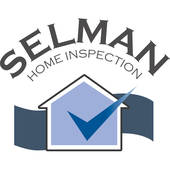Home Maintenance Tip - Attic Installed Heating & Cooling Equipment
- There should be a 24 inch wide (minimum) solid passage walkway to the HVAC equipment.
- There should be at least a 30x30 inch work platform at the equipment.
- There should be a GFCI protected electrical receptacle close to the equipment.
- All condensation drain lines should drain to an observable location.
- There should be a "P" trap installed in the primary condensation drain line.
- If it is gas heat, the flexible gas line should not pass through the heating equipment appliance wall.
When the cooling equipment is installed in the attic space, there should be a condensation pan with a visible drain to the exterior of the home. And the primary condensation drain line should have a P trap and drain to the exterior of the home in a visible location. Rusted condensation pans are prone to leak and may cause damage to the ceilings in your home. The purpose of the condensation drain lines draining to a visible location outside the home is so that you know they are draining. If the drain is not visible and it stops up or the condensation drain is clogged, again, you will be facing costly ceiling or other interior damage.
It is also important that the condensation drain pan be clean. Attic insulation and other debris in the pan may clog the drain line and cause interior ceiling or other damage.
There are also water detectors and alarms that your HVAC specialist can install on your attic installed cooling equipment to provide advanced warning if there is a potential condensation water leak problem.
Solving condensation drain problems ahead of time can save you thousands of dollars.
If you have gas heat, it is important to periodically check two main things. First, be sure that the gas exhaust flue is properly vented to the exterior of the home to prevent carbon monoxide poisoning. Second, be sure that the flexible gas supply line does not enter the heating equipment cabinet. Only a steel gas supply line should pass through the heating appliance cabinet. Flexible gas lines in contact with the cabinet may rupture and create a gas leak. Below is a diagram of the correct gas supply pass through.

Fixing any of these defects in your heating and cooling system will prevent them from being listed in a home inspection report and more importantly, they protect your property and those you love.
For more safety and home maintenance tips, I encourage you to take advantage of our online Home Maintenance Guide.

Comments(1)